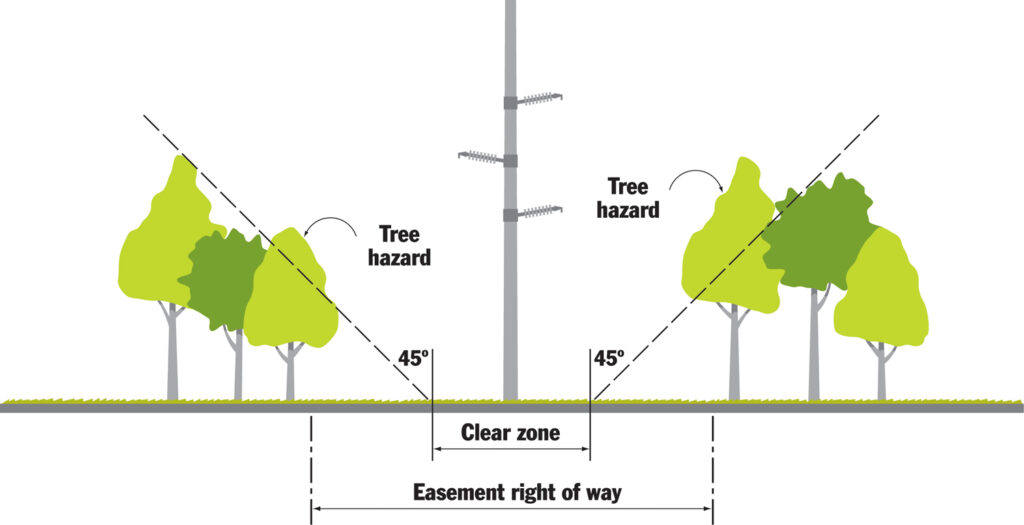For the safety and reliability of the electric system, we must keep a certain amount of distance around power lines clear of anything that may make contact or near-contact with a power line. This includes buildings and tall-growing trees. Great River Energy works to meet or exceed industry standards, including those outlined in the National Electrical Safety Code (NESC) and the North American Electric Reliability Corporation (NERC). Such requirements are designed to keep our electrical system safe and reliable.
You must call Great River Energy before planting any trees or building any structures in the transmission line right of way. We are required to maintain a proper clearance and we do not want to have to remove your new addition.

How much of a clearance do you need for safe operation?
Great River Energy requires a minimum 15-foot clear zone (sometimes more) on both sides of any transmission line, measured from the base of the structure. Transmission lines operate at high enough voltages that actual contact with an object may not be necessary to cause an outage. Additionally, summer temperatures and higher electric use cause lines to sag, sometimes as much as 5 to 10 feet. A tree should never be planted closer than its height at maturity to the edge of the clear zone. For instance, an 18’ tree must be planted at least 18’ from the edge of the clear zone.
Can I plant anything in the right of way area?
DO NOT plant any trees in the right of way before talking to Great River Energy. Great River Energy is obligated to maintain proper clearances within the right of way and we do not want to have to remove your new tree.
Activities in the right of way that do not interfere with the safe construction, operation and maintenance of the line are permitted. For example, you can use the land for:
- Pastureland
- Farming
- Gardening
Can buildings be built beneath a power line?
Generally, buildings are not permitted within the right of way for a few reasons:
- The building may interfere with access to the line for maintenance and emergency repairs
- A fire in a building within the easement area could damage the transmission line
- A building may be closer to a line than electrical codes allow
Are there any hazards to existing metal buildings after a power line is constructed?
Again, Great River Energy designs transmission lines to meet or exceed safety codes, including those specified in the National Electrical Safety Code and required by NERC. If you plan to construct, or have constructed, a metal building near a transmission line, contact Great River Energy. If you have concerns as to whether or not a building is properly grounded or need information on proper grounding requirements, contact your local electric utility or Great River Energy.